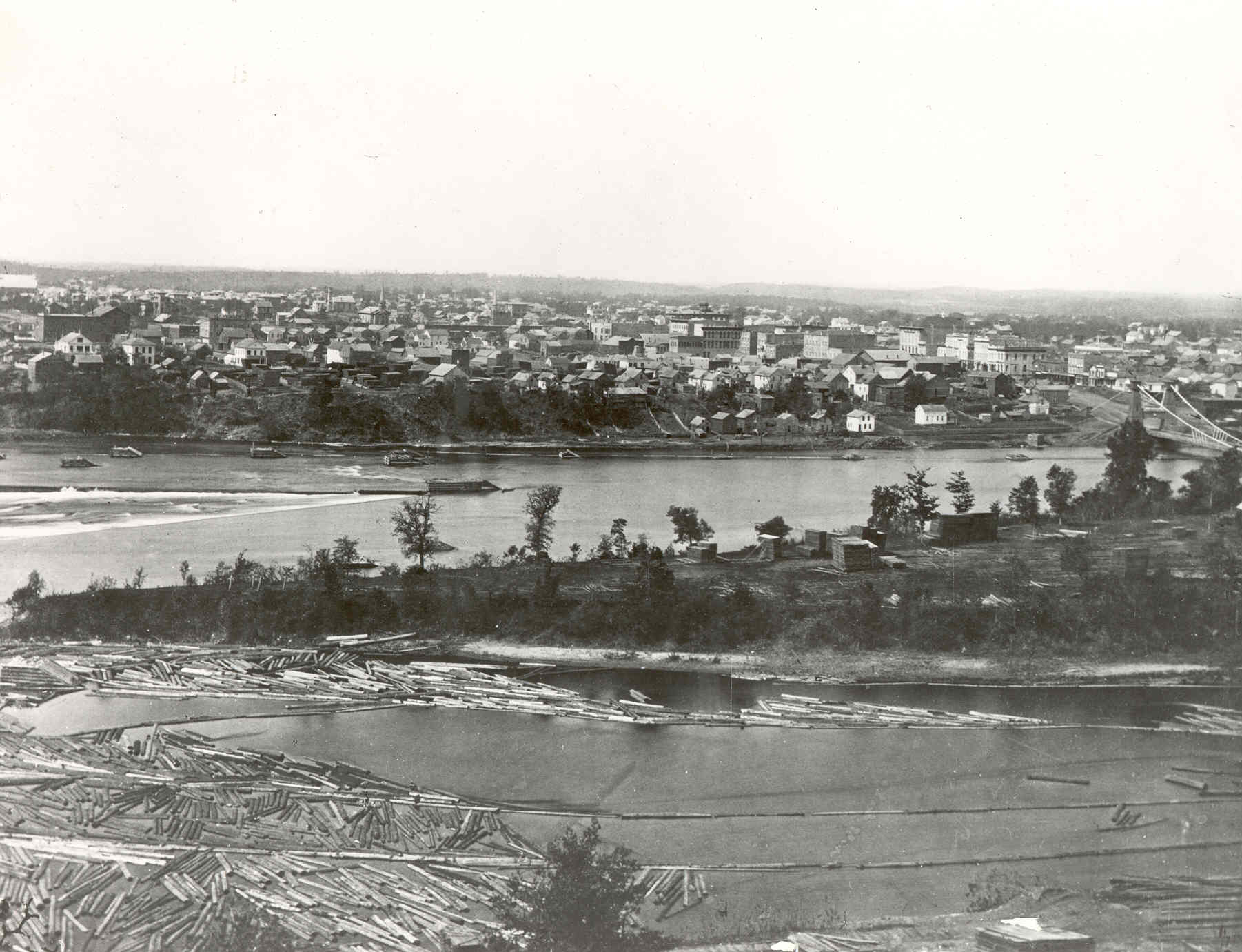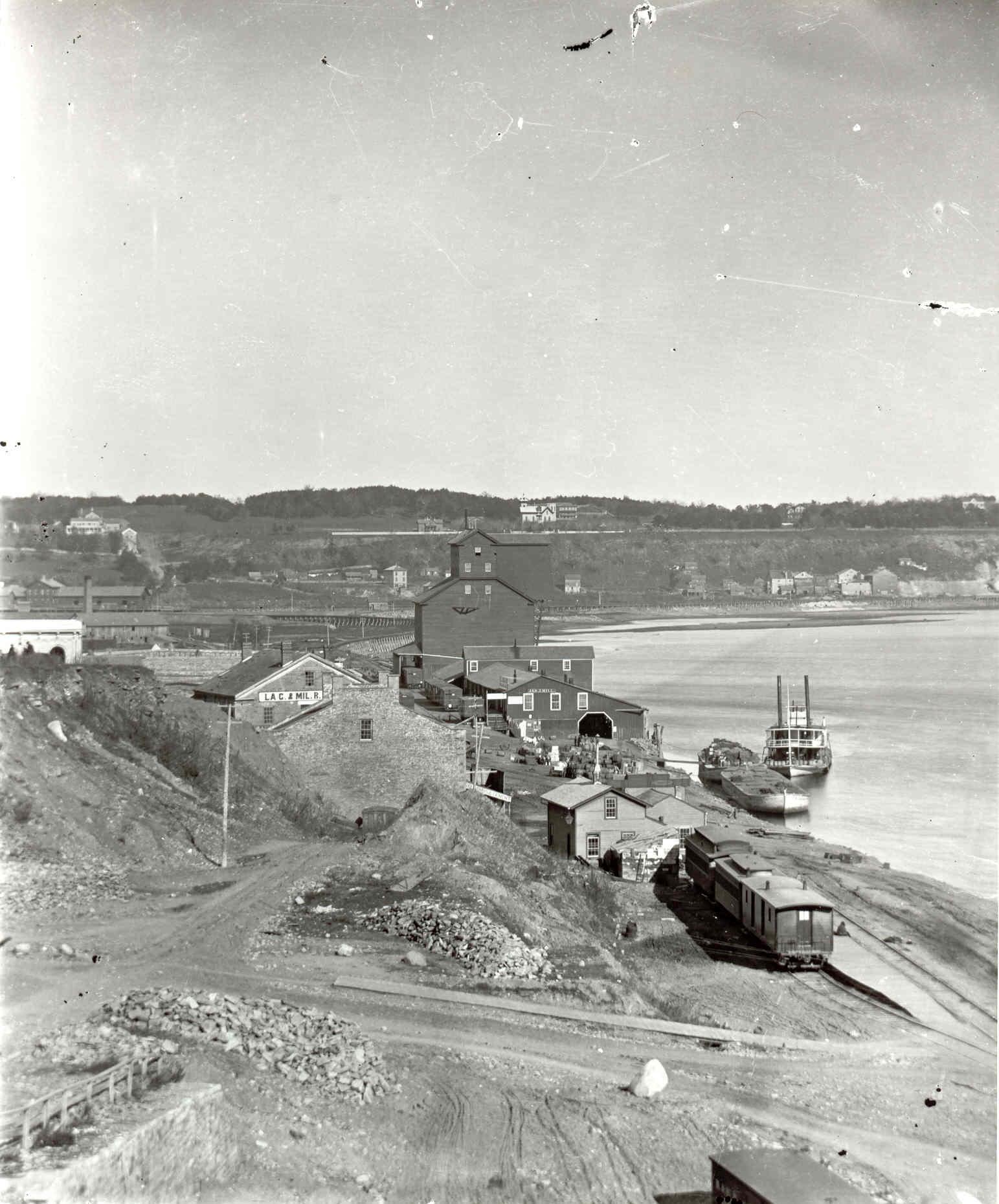

In 1870 Minneapolis (population 13,000), in the upper photo, is viewed from the Winslow House in St. Anthony (population 5,000). The larger town sprawled over the plain between St. Anthony Falls and the rolling glacial moraine country rising two miles to the southwest. The Mississippi floated logs from the northern forest and powered the mills. A few miles downstream at St. Paul (population 20,000), the river broadened into the water transportation artery of the midcontinent. This port (lower photo), seen from Robert Street, was at that time the terminal for river freight mainly from LaCrosse and for rail freight from the cities at St. Anthony Falls and the frontier country just to the west. At the falls and head of navigation, the river nourished the growth of industry and commerce at the gateway between the distant cities of the East and the resources of the emerging Northwest. Upper photo, Minnesota Historical Society (862-B); lower photo, Illingworth, Minnesota Historical Society.